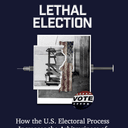

Two new studies suggest that a defendant’s facial appearance predicts whether he is sentenced to life or to death, regardless of actual guilt or innocence. A study of Florida inmates published in the July 15 edition of Psychological Science finds that the perceived degree of trustworthiness of a defendant’s face predicted which of the two sentences a defendant who has been convicted of murder ultimately received. A follow-up study also showed that the link between perceived untrustworthiness and the death penalty persisted even when study participants viewed innocent people who had been exonerated after having originally been sentenced to death. Researchers John Paul Wilson (pictured, l.) and Nicholas Rule (pictured, r.) of the University of Toronto showed participants photos of Florida inmates who had been convicted of first-degree murder and sentenced either to life without parole or death. Participants rated the trustworthiness of each face, without knowing that the person pictured had been convicted of any crime. The inmates who had been sentenced to death had faces that the raters perceived to be less trustworthy than the faces of those who had been sentenced to life. The less trustworthy a face was rated, the more likely it was that the inmate had been sentenced to death. “Here, we’ve shown that facial biases unfortunately leak into what should be the most reflective and careful decision that juries and judges can make — whether to execute someone,” Wilson and Rule said. A follow-up study included the faces of individuals who had been convicted and later exonerated. Even among the exonerees, lower trustworthiness ratings correlated with higher likelihood of a death sentence. “This finding shows that these effects aren’t just due to more odious criminals advertising their malice through their faces but, rather, suggests that these really are biases that might mislead people independent of any potential kernels of truth,” the authors explained.
(“The trustworthiness of an inmate’s face may seal his fate,” ScienceBlog, July 15, 2015; J. Wilson, N. Rule, “Facial Trustworthiness Predicts Extreme Criminal-Sentencing Outcomes,” Psychological Science, July 15, 2015.) See Studies and Arbitrariness.



